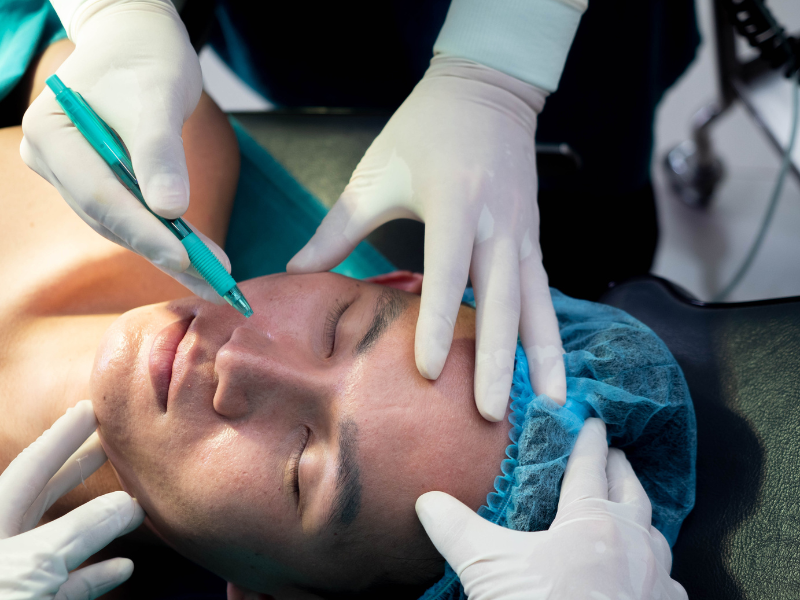Overview: Facial Reconstruction after Mohs Surgery

Facial reconstruction after Mohs surgery involves restoring both function and appearance after skin cancer removal, especially on highly visible and complex facial areas (e.g., nose, eyelids, lips, ears). This delicate procedure is typically performed by a facial plastic surgeon or dermatologic surgeon experienced in reconstructive techniques.
What is Mohs Surgery?
Mohs micrographic surgery is a specialized, tissue-sparing technique to remove skin cancer (like basal cell carcinoma, squamous cell carcinoma) layer by layer while preserving healthy tissue. It’s highly effective—up to 99% cure rate—but can leave significant defects, especially on the face.
Why Reconstruction Is Needed
- To close the surgical defect left after cancer removal
- To restore natural appearance and facial symmetry
- To preserve function (e.g., breathing through the nose, blinking, lip movement)
- To minimize scarring and long-term cosmetic impact
Common Reconstruction Techniques
- Primary Closure: Small defects – Edges are sutured together directly
- Skin Graft: Moderate defects – Skin from another site (e.g., behind the ear) is placed over the wound
- Local Flap: Larger/more complex defects – Nearby tissue is repositioned to cover the defect, preserving color and texture match
- Cartilage Grafting: Nose or ear defects – Structural support is restored using cartilage from the ear or rib
- Staged Reconstruction: Large/complex cases – Reconstruction performed in multiple surgeries for optimal healing and aesthetics
Most Common Facial Areas Reconstructed After Mohs
- Nose: Often requires flaps and cartilage grafting
- Eyelids: Must preserve blinking and protect the eye
- Lips: Requires precision to maintain speech and eating
- Cheeks, forehead, ears: Often reconstructed using local flaps or skin grafts
